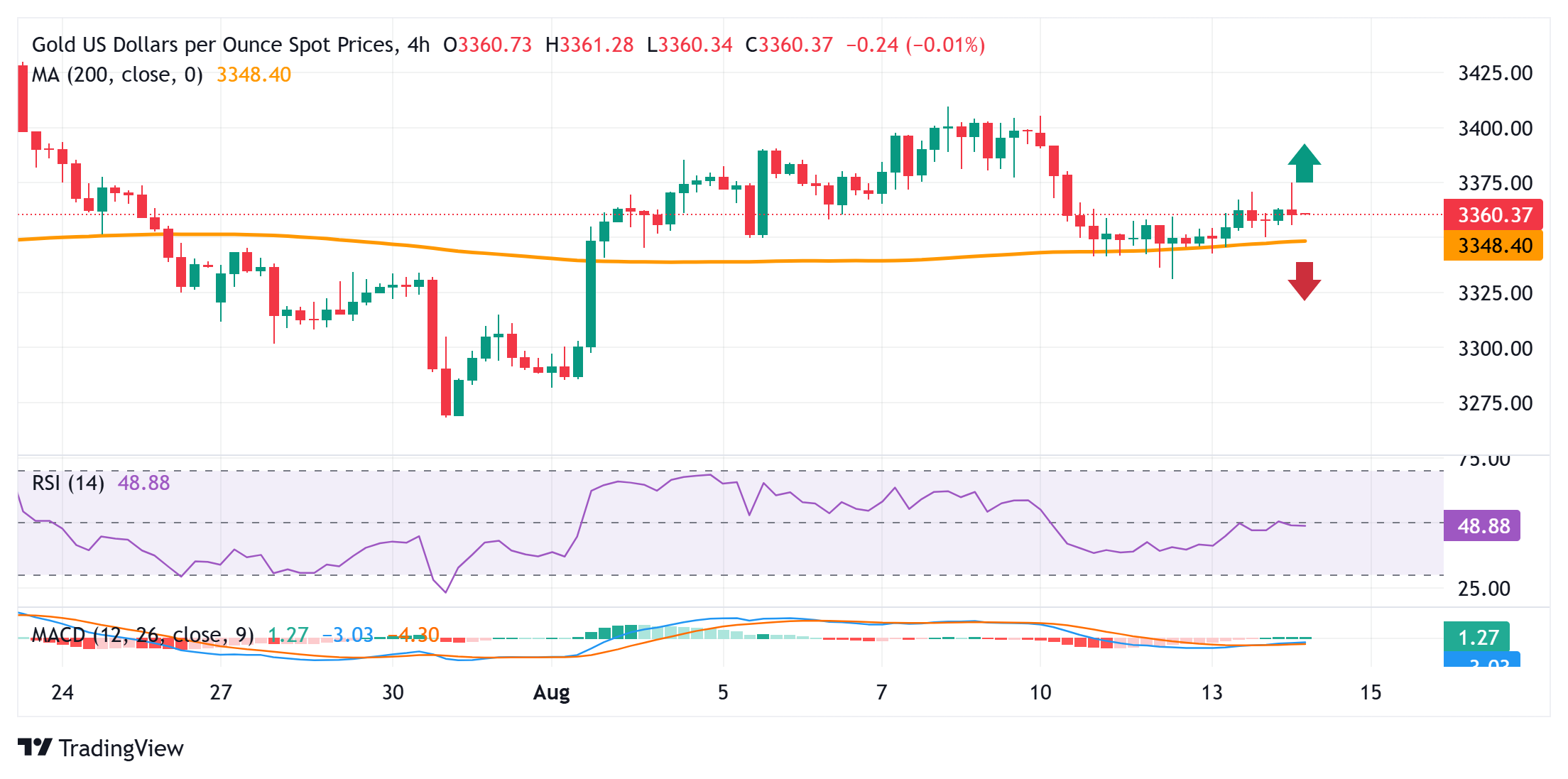Gold retreats amid risk appetite; where does it go after the "V-shaped reversal"?
2025-08-14 14:21:37
The US dollar continues to face selling pressure as the Federal Reserve is widely expected to cut borrowing costs in September. Furthermore, traders have begun betting on two rate cuts by the end of the year, which should continue to be positive for gold, a non-interest-bearing asset. Against this backdrop, it would be prudent to await further follow-through selling to confirm whether gold's rebound from Tuesday's one-week low of $3,331 has lost momentum.

Daily Market Momentum Analysis: Gold bulls hold off on aggressive bets amid rising risk appetite
With the exception of the Nikkei 225, Asian stocks extended their recent gains, tracking the U.S. benchmark S&P 500 and the tech-heavy Nasdaq Composite to their second consecutive day of record gains.
The dollar rebounded slightly after hitting a two-week low early on Thursday, but its upside is expected to be limited as market expectations for a more aggressive rate cut by the Federal Reserve than previously expected.
The Fed is all but certain to cut interest rates by 25 basis points at its September policy meeting, and at least two more rate cuts are expected before the end of the year, according to the CME Group's FedWatch tool.
This expectation was bolstered by Tuesday's largely in-line U.S. consumer inflation data, which followed the July U.S. non-farm payroll report, which showed signs of labor market weakness, providing a basis for further policy easing.
Meanwhile, US President Trump further pressured Federal Reserve Chairman Powell to cut interest rates. In addition, US Treasury Secretary Scott Bessant said the Fed should consider cutting interest rates by 50 basis points next month.
Chicago Fed President Goolsbee said he was more concerned about last month's rise in core inflation than the unusually weak jobs report, and therefore may not support a September rate cut.
Atlanta Fed President Raphael Bostic acknowledged the overall weakness in the latest round of jobs data and noted that tariffs could lead to structural changes, but he declined to comment on a rate cut.
U.S. Treasury yields remained under pressure as investors assessed the potential impact of tariffs on the U.S. economy and awaited the release of U.S. producer price index (PPI) data later in the North American session.
Gold's technical structure supports the view of dip buying at lower levels
Gold prices broke through the $3,358-3,360 resistance level overnight, and the 200-period simple moving average support on the 4-hour chart earlier this week successfully held, all of which are technical signals that favor spot gold bulls. However, oscillators on the hourly and daily charts have yet to gain significant upward momentum, so it would be wise to wait for more follow-through buying before arranging further long positions.
Currently, the Asian session high (around $3,375) may constitute near-term resistance. A break above this level could potentially push gold prices towards the $3,400 mark. This level is closely followed by last week's swing high of $3,409-3,410. A successful break above this level would pave the way for further testing the intermediate resistance level of $3,422-3,423. Ultimately, upward momentum could propel gold prices above the $3,434-3,435 area, potentially challenging the psychologically important $3,500 mark reached in April.
On the downside, if gold prices fall below the $3243-3242 area (the 200-period moving average on the 4-hour chart), they may find support near $3331 (this week's low). If selling pressure persists, gold prices could accelerate towards the $3300 mark. A clear break below this level would turn the short-term technical outlook bearish, opening up room for further declines.

At 14:20 Beijing time, spot gold was trading at $3357.83 per ounce.
- Risk Warning and Disclaimer
- The market involves risk, and trading may not be suitable for all investors. This article is for reference only and does not constitute personal investment advice, nor does it take into account certain users’ specific investment objectives, financial situation, or other needs. Any investment decisions made based on this information are at your own risk.





















